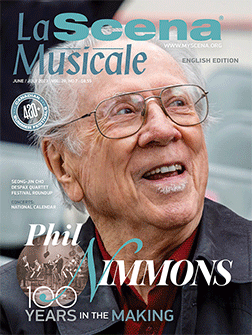
This page is also available in / Cette page est également disponible en:
![]() Francais (French)
Francais (French)
The new Apple Music Classical (AMC) app is out, and it’s already making a big impression.
Launched on March 28, Apple Music Classical is a companion app offered only to paying Apple Music subscribers. The new software pulls from the same database of music, but it claims to provide better audio quality and a more intuitive user interface (UI) than its competitors.

Jessie Char is a classically trained cellist, former Apple employee, and career UI designer
Why is a separate app necessary? According to Jessie Char, a classically trained cellist, former Apple employee, and career UI designer, it would be a lot more difficult to incorporate all the classical music categorization options into the original Apple Music app.
Though she did not work on the app, she said the developers are likely navigating thousands of musical genres, so combining the UIs would require them to make a lot of sacrifices that disadvantage users. She said it’s also easier to publish updates for a separate app.
“I would put this on a very complicated end of the spectrum of design,” Char said. “They’re going to keep classical music in the Apple Music app (as well), but being able to focus on one (genre) at a time really allows the designers to not have to make any of those compromises.”
Better Sound Quality
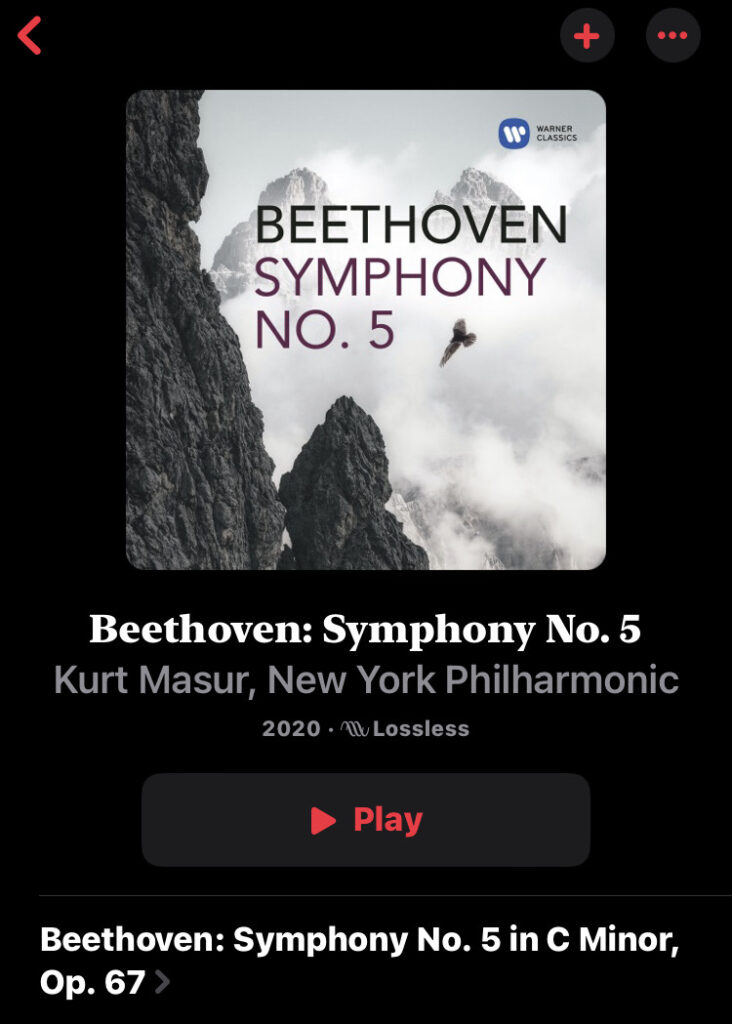
Apple Music Classical uses the Apple Lossless Audio Codec (ALAC) file format with wired headphones, which allows for less taxing streaming that doesn’t compromise sound quality. Apps like Spotify are good at playing shorter songs, but they tend to compress longer works more for efficiency’s sake.
The recordings on the new app have a slightly better sound. Using the 2020 New York Philharmonic recording of Beethoven’s Fifth, conducted by Kurt Masur, as a benchmark, all the instruments sound crisp, with the bass and lower brass instruments appearing more prominent. This offers a fuller listening experience than the version found on Spotify, more comparable in quality to the Free Lossless Audio Codec (FLAC) format used by Idagio, a leading classical music streaming app launched in 2018.
While using wireless headphones, Apple Music Classical instead uses the Advanced Audio Codec (AAC) format, which causes a bit of audio loss. Most people can’t tell the difference between the two formats according to Apple Insider, so it shouldn’t discourage listeners from using the app.
Intuitive User Interface
There’s no doubt the user interface is better. Spotify tends to cram all the information about the composer, opus, and movement into one track title (ex: Beethoven: Symphony No. 5 in C Minor, Op. 67: I. Allegro con brio). This becomes too long to display on one line, which makes it sometimes difficult to distinguish between movements. Apple Music Classical instead puts the composer and opus information in a separate header, with the track exclusively named after the movement (ex: I. Allegro con brio).
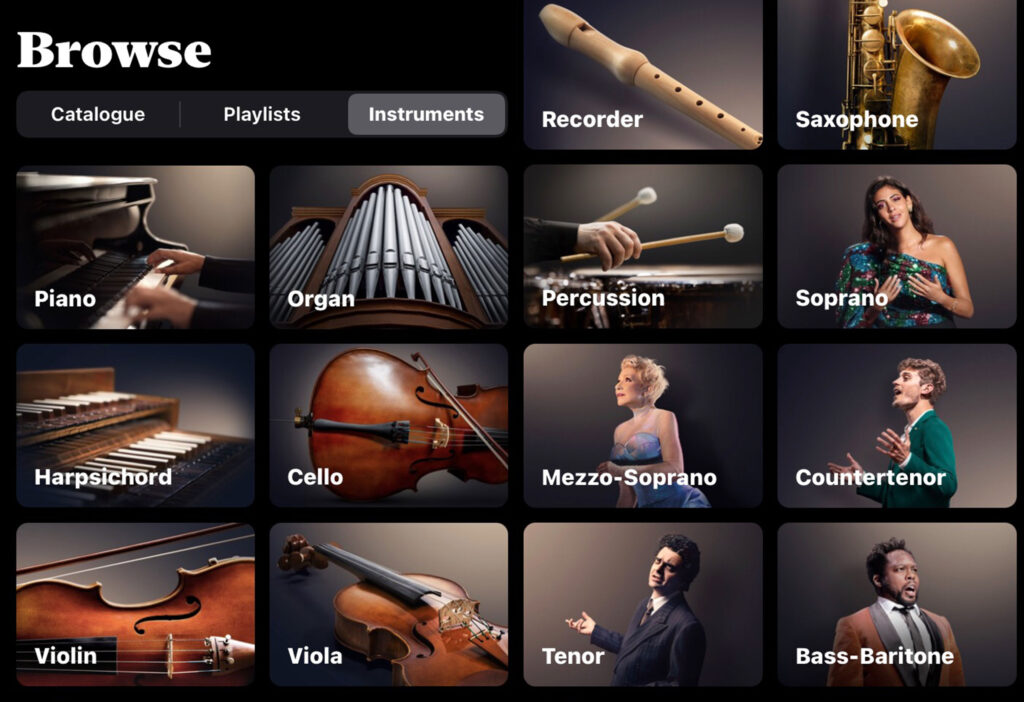
Apple Music Classical has over 20 instrument categories and five vocal range categories
The names of all contributors are also included under each track, which Char said is more necessary for classical music than other genres.
While a pop song might credit a singular artist, classical music always lists the composer, the conductor, musicians and soloists. “You already kind of have four different names vying for that one spot that’s given on standard Apple Music,” she said.
In terms of categorization, the app divides music into eight periods from Medieval to 21st Century, over 20 instruments, and five vocal ranges. Combined with clear visuals tied to each category, this helps both new and seasoned listeners navigate albums more easily.
Like Idagio, Apple Music Classical offers a set of mood playlists that range from relaxing to broken-hearted. It’s not as varied as Idagio’s 13 moods that include angry, nervous, and excited, and not as quick to use, but listeners have more control over the instruments used, so it’s a give and take.
To find specific compositions, users can use a revamped search function. On Spotify, the first result when searching “Beethoven’s Fifth” is Walter Murphy’s A Fifth of Beethoven – decidedly not the right work. Even Idagio returns piano concertos and violin sonatas before the right composition. In addition to finding a curated list of albums that regularly include the fifth symphony, Apple Music Classical pulls up the page for the composer, as well as individual tracks with similar names.
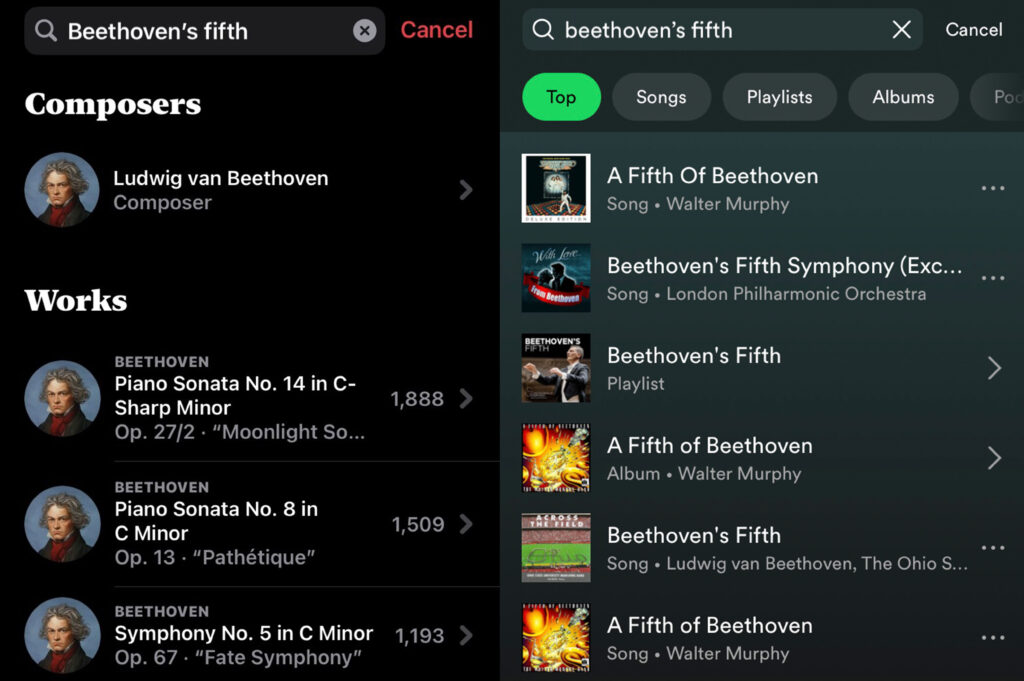
Screenshot of search results for “Beethoven’s Fifth” on Apple Music Classical (left) and Spotify (right)
“If a music student is studying a specific sonata, it’s important to be able to see all the people who have performed it, instead of really having to dig around on different streaming apps,” Char said, adding that being able to see many results changes how music is analyzed from an historical context.
The tracks on the curated list can be organized by popularity recording date, or duration. They’re also accompanied by descriptions of their musical origins and their composer’s histories, akin to a digital program. Astor Piazzolla’s Las Cuatro Estaciones Porteñas (The Four Seasons of Buenos Aires), for example, explains the origin of the movement names, the composer’s five-year writing period, and how it directly quotes Vivaldi’s Four Seasons. This is a service Spotify only offers sparingly, and that Idagio lacks entirely. That said, Idagio provides lyrics for songs with vocals where Apple Music Classical does not – another give and take.
Some Small Issues
The curated list presents a small issue for classical music fans. In the rare instance where a track is pulled from an album with many collaborators, it becomes impossible to use the list’s search function to find that artist’s arrangement.
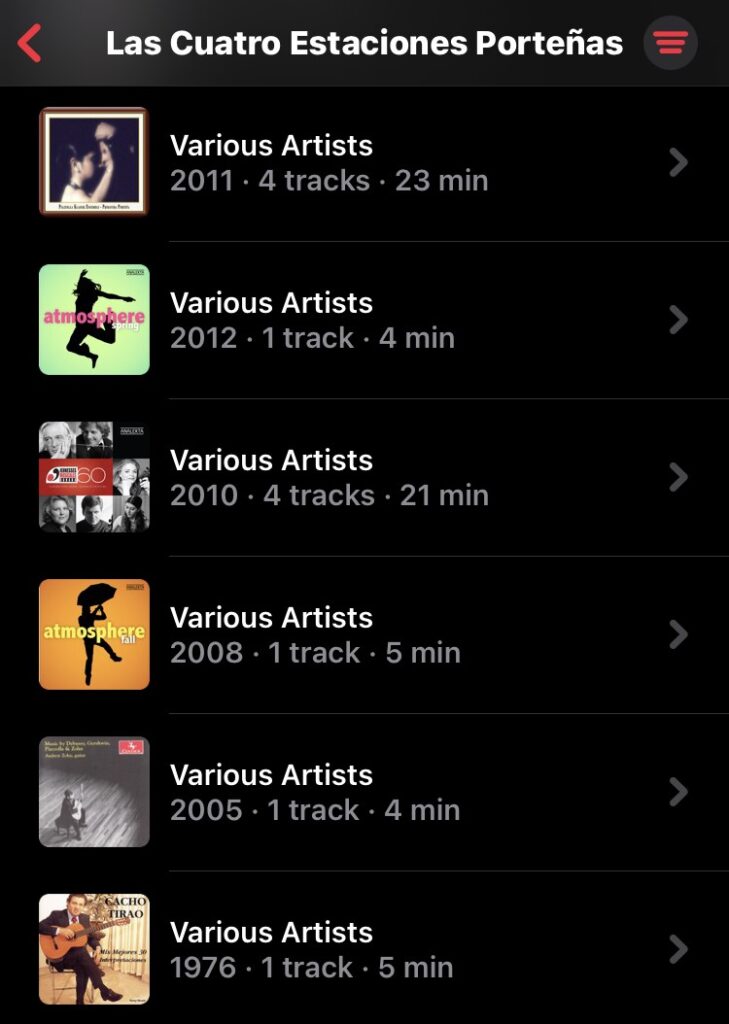
The third arrangement in this list, labelled “Various Artists”, was recorded by Gryphon Trio as part of an album with 20 contributors
This is because it will instead be labelled “Various Artists”; while the track can still be found using the app’s main search tool, it can only be found in the curated list by manually scrolling through it. Options that have this label are pushed to the bottom of curated lists. It’s a complication that’s bound to happen with such a massive database, infrequent enough to go unnoticed by most users.
Finding saved music is also a bit confusing. The plus-shaped button in the top right corner allows users to save music in the Library’s Albums folder. When adding individual artists, recordings or composers, the button is replaced with a star-shaped Favourite option that adds them to their respectively named folders. For the sake of consistency, they should all be separate categories in a shared Favourites folder, or the button should always stay as one symbol.
Finally, opera and art song appear under the Vocal Music genre, while ballets appear under the Stage Works genre. Their inclusion as distinct categories in a future update would be beneficial to users who don’t know as much about genre classification. This isn’t a problem, however, once they’re familiar with the app.
Final Verdict
These issues ultimately have little impact on enjoyment of Apple Music Classical. With its helpful organization options, efficient search functions, and educational descriptions, the app addresses many long-standing streaming concerns held by classical music lovers, making the $11 monthly subscription more than worth it.
Subscribe to Apple Music Classical (and Apple Music) now for a one-month free trial.
The subscription will automatically renew for $11 per month.
This page is also available in / Cette page est également disponible en:
![]() Francais (French)
Francais (French)














